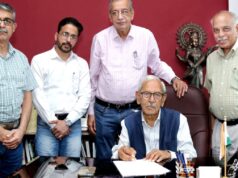IIT Madras research team to approach NTPC, Power Grid and other utilities to demonstrate this technology and its use in the real power system network
Indian Institute of Technology Madras researchers have developed an efficient technique for the identification of pollution deposit level in the Power transmission network.
The pollution-related electrical flashover occurs in the working conditions and can lead to blackouts and collapse of the system. Cleaning the polluted insulator under the working condition, while technically quite challenging, seems to be the fool-proof way of resolving the problem.
The IIT Madras Research Team is planning to approach NTPC, Power Grid and other utilities to demonstrate this technology and its use in the real power system network.
The reliability of an electric power system largely depends on the performance of the electrical insulation. The outdoor insulation on the transmission lines running over a few lakh kilometres and the substation equipment, in addition to the electrical, thermal and mechanical stresses, are subjected to environmental pollution.
However, due to the high operating voltages and huge spatial span of the electrical transmission system, it would be essential to ascertain the level of pollution deposition and the type of pollutant before such a mammoth exercise can be planned.
For substations and lines running close to the chemical plants, the deposit can involve NaCl, Al2O3, C, SiO2, CaSO4, and KNO3, among others, while that close to the mining areas can acquire Nickel, Copper, and Manganese, besides a few other materials.
It would be much simpler and economical to measure the contents and thickness of the deposition remotely (non-invasively). An elegant solution based on Laser-Induced Breakdown Spectroscopy (LIBS) has been developed by the research groups of Prof. R. Sarathi, Department of Electrical Engineering, IIT Madras, and Prof. N.J. Vasa, Department of Engineering Design, IIT Madras.
At present, by shining a laser beam at a distance of 40 metres, the researchers can identify the constituents of pollution deposition, while efforts are underway to extend this distance to 100 m. This would enable assessing the pollution layer on transmission line insulators and the windmills either from the ground or from a drone.
This work was financially supported under the National Perspective Plan of the Ministry of Power, Government of India through Central Power Research Institute (CPRI), Bengaluru.







